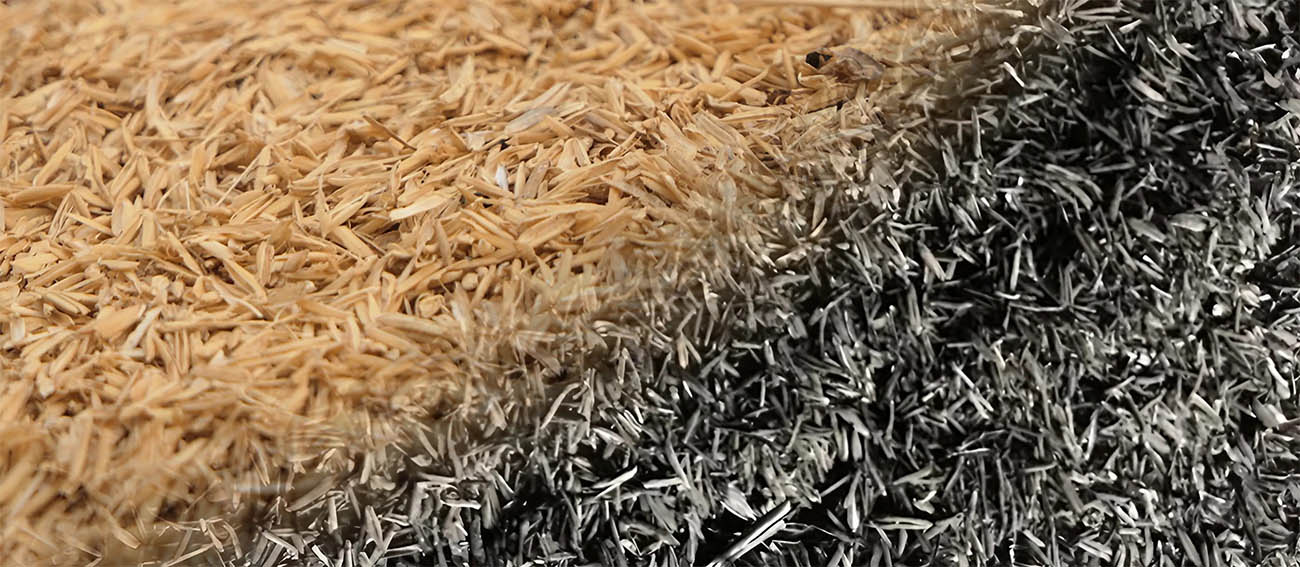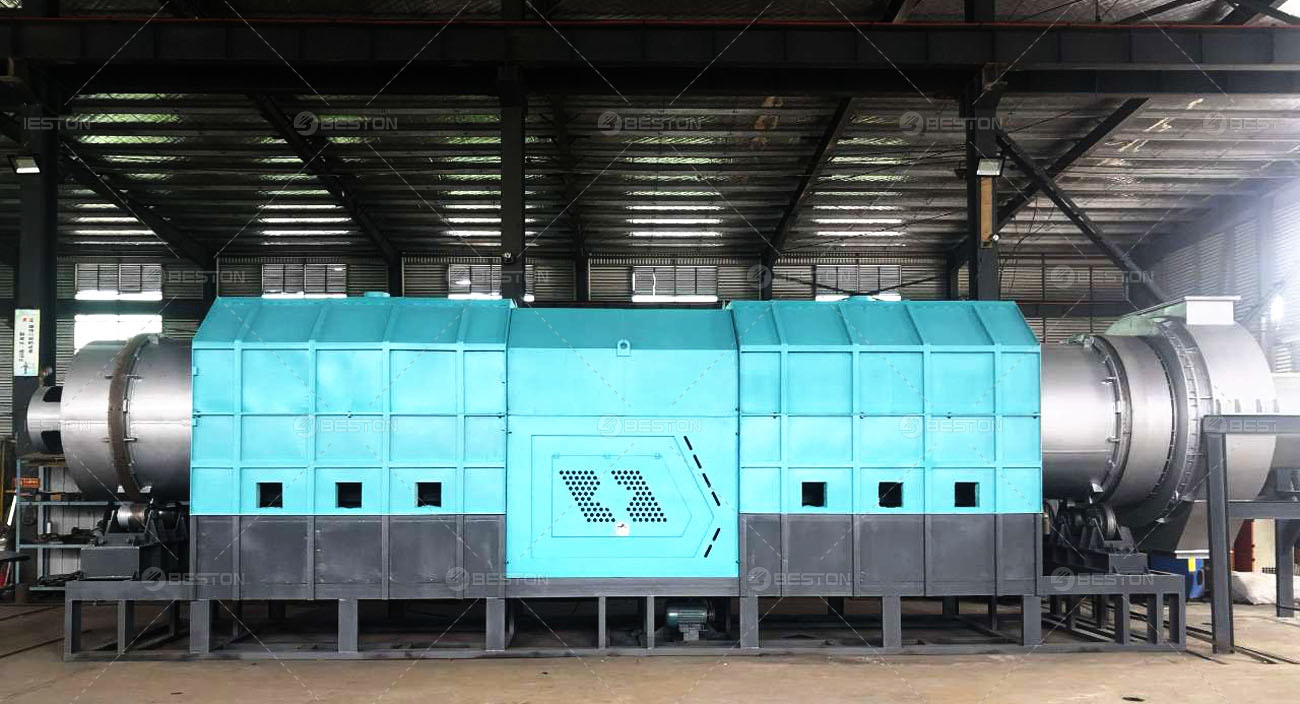Rice husk biochar production offers numerous environmental and economic benefits, including waste reduction, carbon sequestration, and soil enhancement. However, maximizing production efficiency is essential for ensuring cost-effectiveness and scaling operations. By optimizing several critical aspects of the process, producers can increase the yield and quality of biochar, while minimizing energy consumption. Here are some key strategies to improve the efficiency of rice husk biochar production.

1. Selecting High-Quality Rice Husk Feedstock
The efficiency of biochar production starts with selecting the right raw material. Rice husks should be clean, dry, and free of contaminants. Moisture content plays a critical role in pyrolysis efficiency—high moisture levels can hinder the process, resulting in lower yields and energy waste. Ideally, rice husks should have a moisture content of 10-15%. Drying the husks before processing, either through natural sun drying or using a mechanical dryer, can significantly reduce energy consumption during pyrolysis and improve overall efficiency.
2. Optimizing Temperature Control
Temperature regulation is a critical factor in the pyrolysis process. Biochar production equipment operates at temperatures typically ranging from 400°C to 600°C. If the temperature is too low, the rice husks may not fully decompose, resulting in lower carbon yields. Conversely, excessively high temperatures can cause rapid combustion of volatile compounds, reducing the amount of solid biochar produced. By fine-tuning the temperature according to the specific feedstock used, biochar production efficiency can be significantly improved.
Modern biochar production equipment often features advanced temperature control systems, allowing for precise monitoring and adjustment. Using automated control systems that adjust heat based on real-time data can ensure consistent production, reducing energy waste and enhancing biochar quality.

3. Efficient Heat Recovery Systems
One of the ways to optimize rice husk biochar production is by implementing a heat recovery system. Pyrolysis is an energy-intensive process, and the heat generated in the reaction chamber can be used to fuel other parts of the process. Many biomass pyrolysis plant is designed to capture and recycle heat produced during pyrolysis. This recovered heat can be used to dry incoming feedstock or even generate electricity to power other stages of production, significantly reducing energy costs.
Heat recovery systems not only improve energy efficiency but also help in lowering the overall operational costs. By utilizing waste heat, the system becomes more sustainable, reducing its carbon footprint and improving the profitability of the biochar production process.
4. Utilizing Continuous Pyrolysis Systems
While batch pyrolysis systems are often used in smaller-scale operations, switching to a continuous pyrolysis system can improve biochar production efficiency at a larger scale. A continuous biochar production system allows for the uninterrupted processing of rice husks, increasing throughput and reducing downtime. This method is ideal for high-volume production and is generally more energy-efficient, as the system maintains a steady temperature and reduces the need for repeated heating.
Continuous pyrolysis systems are also more automated, requiring less manual intervention. The ability to continuously feed rice husks into the system ensures that the pyrolysis reaction remains active, leading to more consistent results and a higher yield of biochar. To obtain advanced continuous equipment, please contact Beston Group Co., Ltd.
5. Enhancing Biochar Quality through Improved Equipment Design
The design and quality of biochar production equipment directly influence the efficiency of the process. Modern biochar production equipment often comes equipped with advanced features such as airtight sealing, optimized combustion chambers, and upgraded carbonization technology. These design improvements help to ensure that the pyrolysis process occurs in the most efficient way possible, with minimal heat loss and the maximum retention of volatile compounds.
The choice of material for the construction of the pyrolysis chamber is also important. High-quality, durable materials that can withstand the high temperatures generated during pyrolysis contribute to the longevity and reliability of the equipment, leading to more consistent operation and fewer breakdowns, which can improve overall efficiency.
6. Continuous Monitoring and Data Analytics
Implementing real-time monitoring systems can drastically enhance the efficiency of rice husk biochar production. Using sensors to track parameters such as temperature, pressure, and gas composition allows for adjustments to be made during the process, optimizing the yield and energy consumption. Automated feedback systems enable operators to respond promptly to any irregularities, ensuring the process remains as efficient as possible.
Data analytics can also play a crucial role in predicting and preventing potential inefficiencies. By analyzing past production data, operators can identify patterns and optimize future operations, reducing waste and improving performance over time.
7. Scaling Production to Achieve Economies of Scale
As with any industrial process, increasing the scale of rice husk biochar production often leads to better efficiency. Larger systems are generally more cost-effective, as they can take advantage of economies of scale. This allows producers to invest in larger biochar production equipment with higher throughput and reduced energy per unit of biochar produced.
Scaling production also allows for more strategic integration of the biochar production process with other operations, such as the use of rice husk in alternative energy generation or composting. This integration can further improve efficiency and profitability, as byproducts such as bio-oil and syngas can be sold or used to fuel the production system.
8. Maintenance and Regular Upkeep of Equipment
Efficient biochar production relies on the regular maintenance of the biochar production equipment. Over time, wear and tear can reduce the performance of the system, leading to energy inefficiencies and reduced output. Regular inspection, cleaning, and part replacement ensure that the equipment operates at peak performance.
By adhering to the manufacturer’s maintenance schedule, operators can prevent costly breakdowns and extend the lifespan of the equipment, ultimately improving the long-term efficiency and profitability of the biochar production operation.
Maximizing Biochar Production Efficiency
Improving the efficiency of rice husk biochar production requires a multi-faceted approach. By focusing on proper feedstock preparation, optimizing temperature control, utilizing heat recovery, and scaling production, operators can significantly improve the overall efficiency of the process. Investing in high-quality biochar production equipment, employing continuous pyrolysis systems, and using data analytics for real-time monitoring will not only enhance productivity but also ensure a more sustainable and profitable operation.
